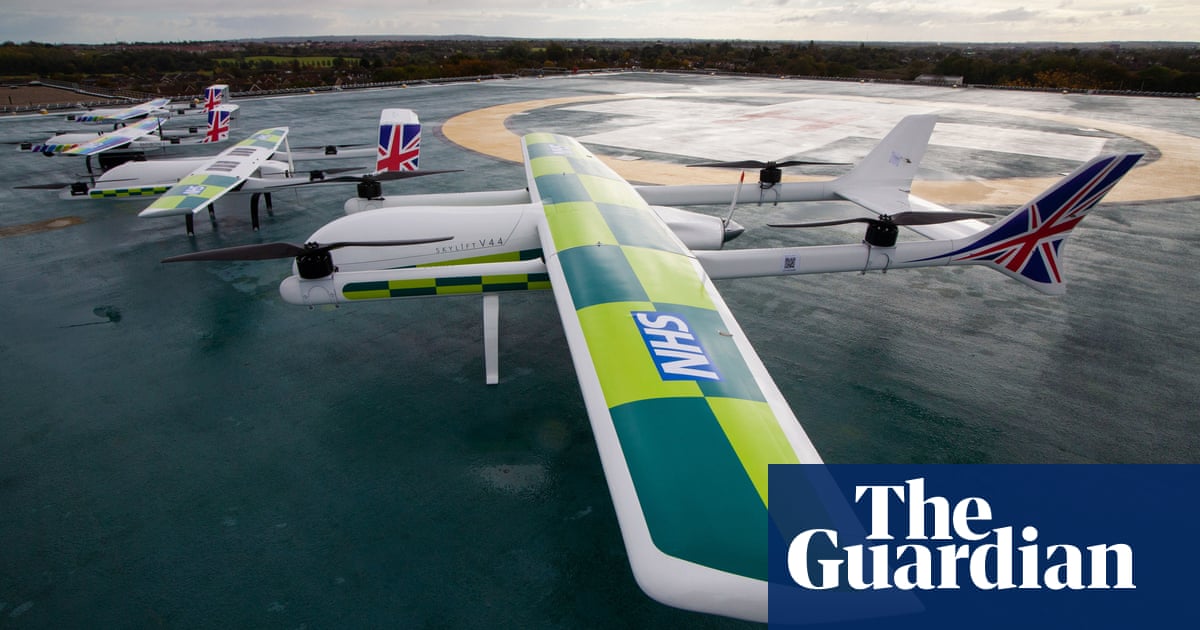Drones could be used for NHS-related missions in remote areas, inspecting offshore wind turbines and supplying oil rigs by 2026 as part of a new regulatory regime in the UK.
David Willetts, the head of a new government unit helping to deploy new technologies in Britain, said there were obvious situations where drones could be used if the changes go ahead next year.
Ministers announced plans this month to allow dronesto fly long distances without their operators seeing them. Drones cannot be flown “beyond visual line of sight” under current regulations, making their use for lengthy journeys impossible.
In an interview with the Guardian, Lord Willetts, chair of the Regulatory Innovation Office (RIO), said the changes could come as soon as 2026, but that they would apply in “atypical” aviation environments at first, which would mean remote areas and over open water.
Referring to the NHS, Willetts said there was potentially a huge market for drone operators. “It’s great for drone operators commercially, but it’s also great for services like the NHS,” he said.
Drones could be used to deliver drugs to GPs and patients in remote locations, and to take blood samples to hospitals for testing, he said.
The Scottish Highlands and islands could be one area of the UK to benefit, as could farming as a sector, he added. Regulatory changes could enable the use of drones under the government’s safer streets fund, which supports measures against neighbourhood crime and antisocial behaviour.
“You could imagine that, for the safer streets initiative, they might be used by the police in circumstances where they might be trying to ensure public safety,” he said.
Willetts also indicated that the definition of an “atypical” air environment could be broadened, which could enable greater use of drones over long distances. The definition could “cover a lot of airspace”, he said.
For drones to operate in busier airspace, however, there would need to be progress on technology and standards that alert aircraft to their presence.
Citing deliveries to oil rigs and the maintenance of offshore wind turbines as another example of potential use by 2026, Willetts said that “strictly speaking” using a drone to check on a turbine involved a line-of-sight requirement.
Sign up toTechScape
A weekly dive in to how technology is shaping our lives
after newsletter promotion
As part of last month’s announcement, the government revealed it was giving £16.5m to the Civil Aviation Authority to deliver a regulatory framework that would allow beyond-line-of-sight drone use. Willetts said regulations had become disproportionate.
The NHS already delivers urgent pathology items such as blood samples via drones as part of a trial in central London. It involves moving samples between Guy’s hospital and a lab at St Thomas’ hospital in partnership with the drone companies Apian – a UK startup co-founded by NHS doctors – and Wing, which is owned by Google’s parent company Alphabet. A similar trial has also taken place in Northumberland.
The UK technology secretary, Peter Kyle, said the regulatory changes would help the UK “lead the world in new technologies”.
“These are exactly the kinds of barriers we’re determined to break down through the Regulatory Innovation Office,” he said. “Cutting red tape so drones can safely deliver supplies or inspect offshore wind turbines without costly workarounds like putting someone in a boat.”
